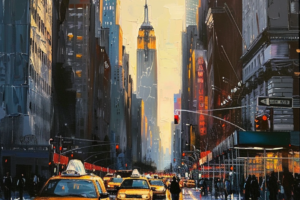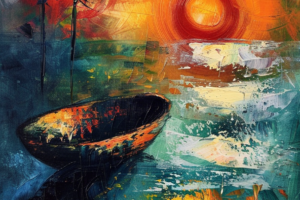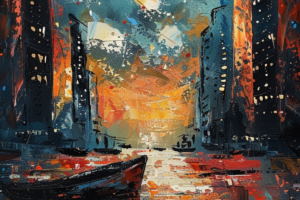So, you’re curious about how to make minimalist art. You might already be an artist interested in branching out into a new style of art.
Or maybe, you’re trying to create art for the first time. Then, the minimalist style is a great place to begin. Minimalist art is simple yet distinctive. But it can make a massive impact with just a few lines.
It’s also very trendy and sought after right now. Minimalist art is perfect for display in modern and contemporary homes. It works well where traditional art can look out of place.
But there’s a lot more to minimalist art than you might think. It often involves a lot of careful planning and thought behind the art.
And there are many different types of minimalist art. So, you have tons of options for the artwork you create.
You could create minimalist sketches, minimalist illustrations, or minimalist line drawings. Or, you can even experiment with working in 3D, making minimalist sculptures. The only limit is your imagination!
In this article, I’ll share some tips and ideas for how to make minimalist art. You can see some of my minimalist designs here for inspiration.
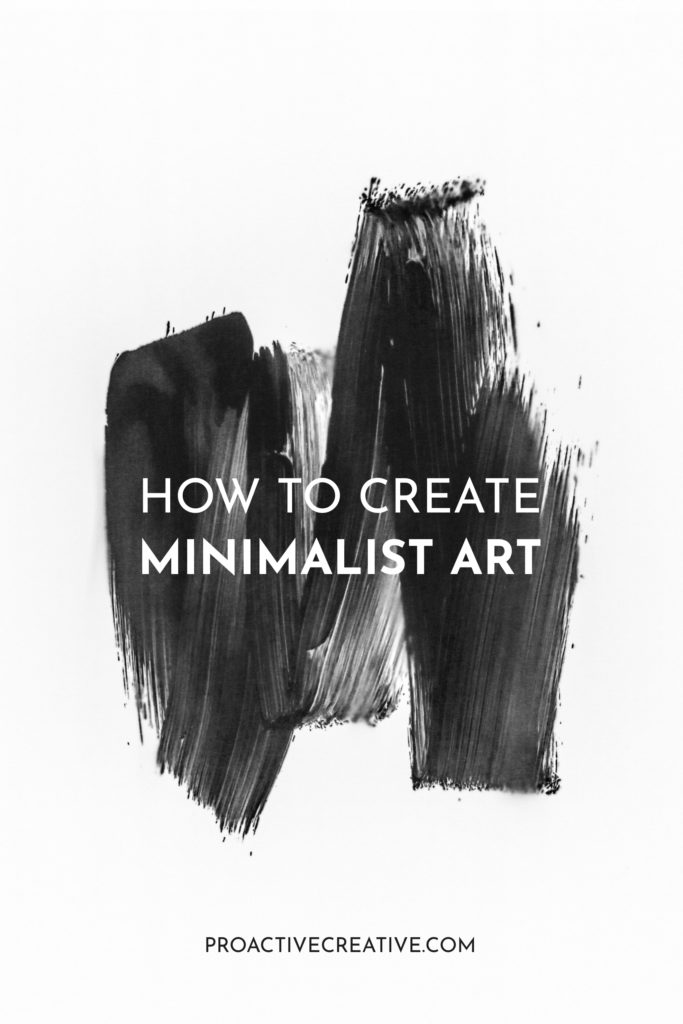
What is Minimalism?
Minimalism is a form of abstract art that’s very popular right now. But it first emerged back in the 1960s in the USA.
With minimalist art, the aim isn’t to reproduce the image of any specific object or person. Instead, the art itself becomes the reality to which the viewer responds.
As a result, minimalism is probably the most abstract art form. Minimalist art removes any form of the artist’s self-expression. Instead, the focus is on the art and the art alone.
Key features of minimalist art include geometric shapes, repetition, and negative space. A monochromatic or limited color palette is also common.
You’ll find minimalist art in most great art galleries around the world. Some of the most famous minimalist artists are Donald Judd, Frank Stella, and Sol LeWitt.
How to Make Minimalist Art
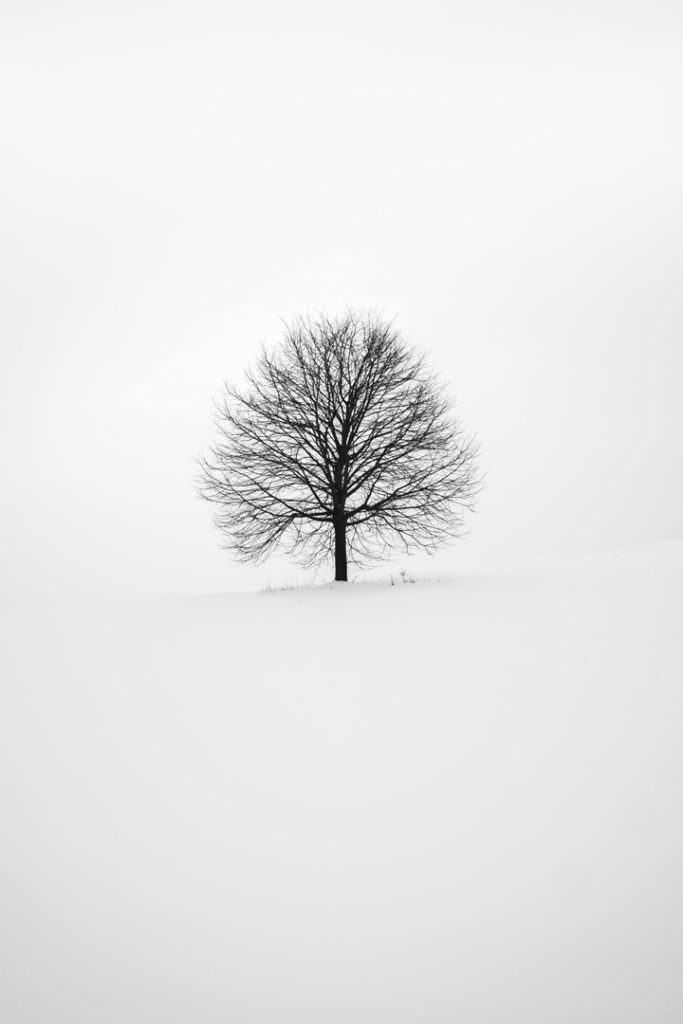
Now, you know a bit more about minimalist art. So, it’s time to create your own minimalist drawings and artwork.
Here are some things to keep in mind as you experiment with minimalist art:
Select Only the Essential Elements
Before diving in, you should spend some time thinking about what you want to create.
Minimalist art can be deceivingly simple. But a lot of thought has to go into it.
You want to strip the design back to its basics. So first of all, it’s important to decide which elements need to stay.
What elements of your artwork are entirely necessary? And which ones could you lose without losing the meaning of what you’re trying to create?
For example, consider a minimalist portrait. It could be as simple as the facial outline without any other features at all.
Think About the Message or Idea You Want to Convey
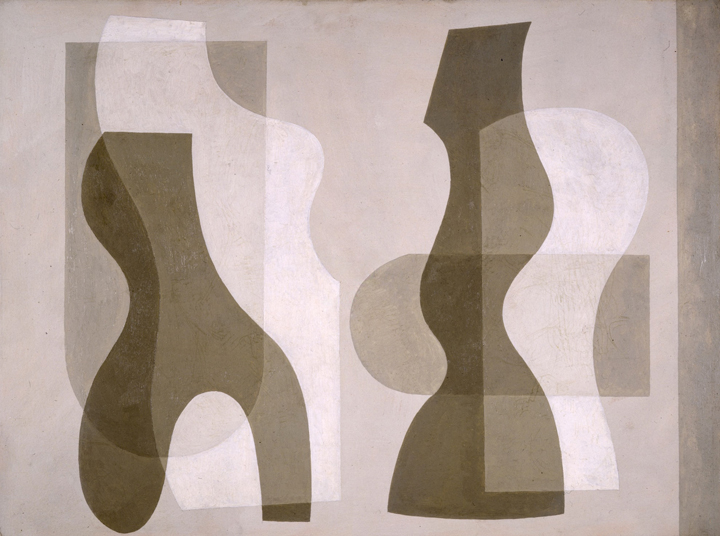
Minimalist artwork can be very powerful thanks to its simplicity. But that’s only if you get it right.
So, you should carefully consider what kind of message you want to give the audience.
What is the idea or thought behind your artwork?
How do you want it to impact the viewer?
What emotions or feelings do you want to provoke in them?
Then, work out how you can do that through your minimalist artwork.
Simplify Your Artwork
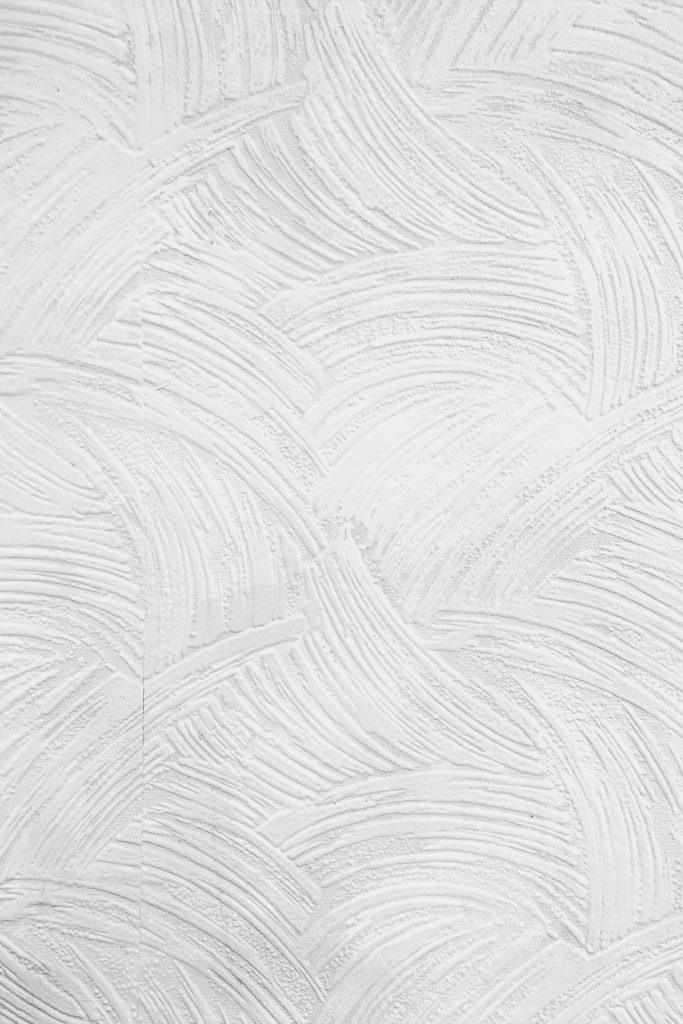
Once you’ve decided how you want your artwork to look, you’re just getting started.
Next, you should think about how you can simplify your design even further. Can you smooth out some details or pare it back a bit more?
Instead of a sketch with gradual shading, you could use one color for the area. While it will look less realistic, you’ll achieve that minimalist style.
Other ways to do this include using geometric shapes or line art.
You should also choose a strong color scheme. Many minimalist artists will use a limited color palette in their artwork. Too many different colors can become overwhelming.
And as a result of using fewer colors, each one will carry greater significance.
So, don’t rush into selecting colors. Instead, put some thought into how you want the viewer to feel.
Brush up on color psychology. For example, you could choose colors that work well together. Or, you could deliberately go for colors that clash if that’s the effect you want to create.
Use Bold Blocks of Color

You can use bold colors to make a striking yet simple piece of art.
Once you’ve chosen your colors, think carefully about how you’ll place them on your canvas.
The contrast between your colors can be as important as the colors themselves.
If you’re using digital software, it’s easy to fill areas with one click. So, you could try out different combinations and test out how it will look.
Bright, vibrant colors will create a bold minimalist artwork.
Go Monochrome
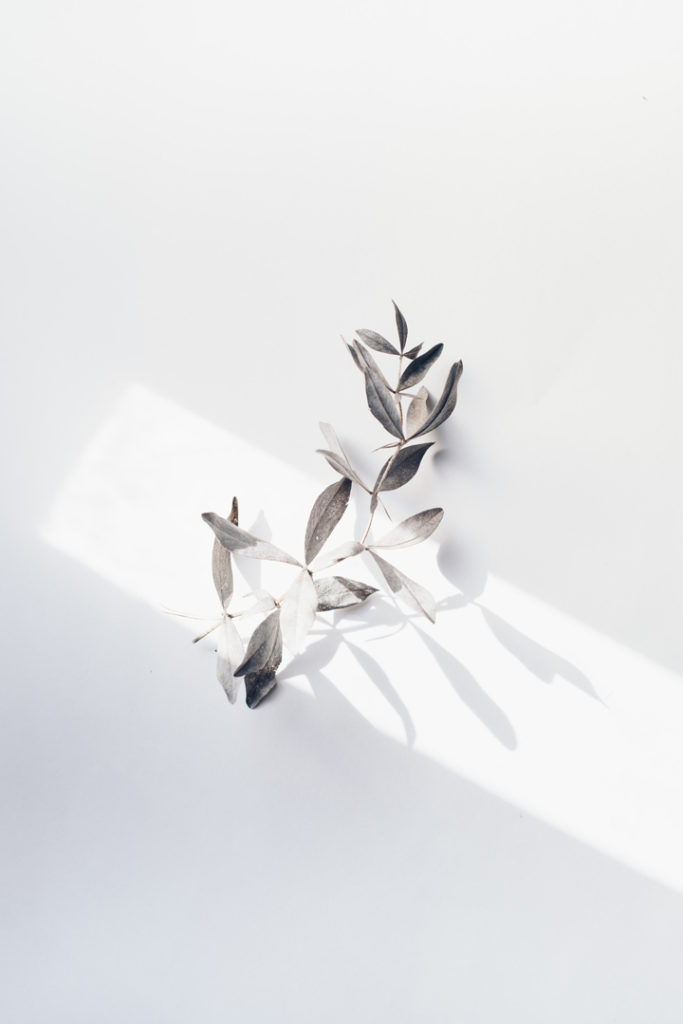
Alternatively, you could experiment with using black or white.
Monochromatic color schemes are also common in minimalism. They strip back the artwork to its simplest.
So, instead, the viewer is drawn into the shapes and forms of your art. It can invite people to look a little closer.
Consider the White Space
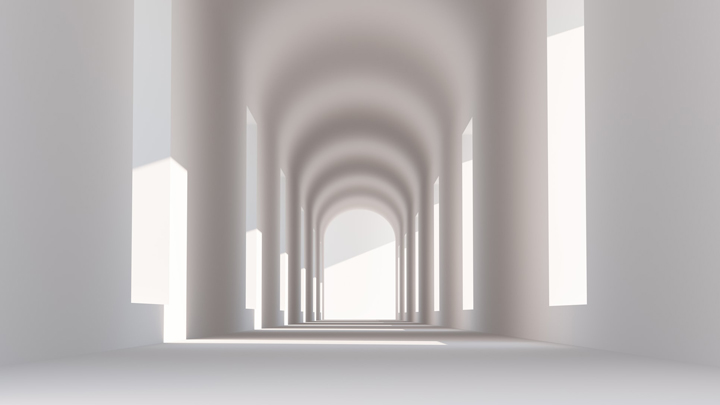
With minimalism art, it should never look squashed in or cramped. As with any form of minimalism, the white space will showcase what you’ve created.
So, think about where you will have color (or lines). And then make sure you’ve left enough space around it.
Don’t fill every little gap. Let your minimalist artwork breathe.
The same goes if you’re creating 3D minimalist art. It’s as much about what’s not there as what is there. Maybe you have arches, holes, or spaces within the sculpture you’ve created.
Use Repetition
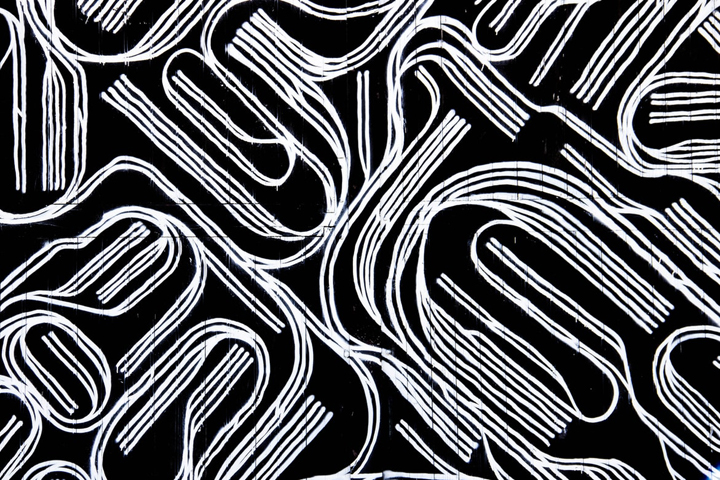
Reptition is a common feature in minimalist art. So, see if you can incorporate it into your own artwork.
You could have repeated geometric shapes or colors. You can get more ideas on how to use repetition from these famous minimalist artists.
Go for Clean Lines and Curved Shapes
Another way to make your art more minimalist is by altering the types of shapes you use.
That could mean going for sharp, square lines with clean definitions.
Or, you could opt for using curved shapes, that also look simple and clean in their own way.
You want your shapes to look regular, with recognizable forms.
You’ll see a lot fewer organic shapes in minimalism than in abstract or realistic types of art.
Creating Minimalist Portraits
If you like to draw people, you could try creating a minimalist portrait.
This stripped-back style reduces a detailed portrait to the bare minimum. But it’s also very personalized, so people can recognize themselves from a few key details.
A minimalist portrait has tons of different uses. Often, influencers will use them on their social media or websites.
But you could also use minimalist portraits for wedding invitations or birthday cards.
You could frame a minimalist family portrait and hang it on your wall. That also makes a kind and thoughtful gift for a loved one.
Often, a minimalist portrait won’t have all the facial features filled out. Often, the face will be eyeless, with just eyebrows and a mouth to provide structure.
Or there could be no facial features at all. Instead, it’s all about the shape of the face, hair, and the style and color of the clothes.
How to Draw a Minimalist Portrait
When creating a minimalist portrait, you’ll need a photo for reference. Then, you’ll work on the design in layers, building up to the finished piece.
You can create minimalist portraits by hand, but it works just as well on a tablet. The best program to use is Procreate, Photoshop, or Illustrator.
The first step is to pick out the colors you’ll use. You’ll need to think about the person’s hair, skin, and clothing colors. Select the closest colors and write them down so you can easily refer to them later.
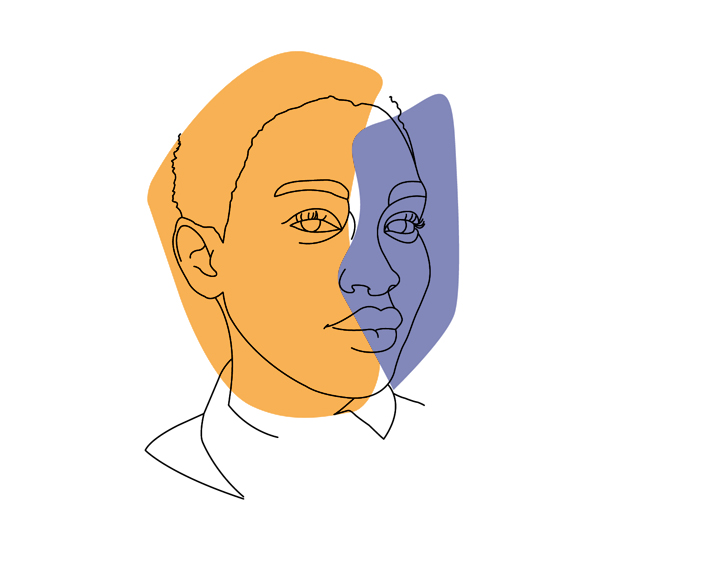
(Image credit: Proactive Creative)
Then, you need to look closely at the person’s facial features. You should also pay attention to their body shape and hairstyle. Don’t forget any accessories they wear, like glasses, or jewelry.
When it comes to creating each feature, you should use a different layer for each one. Then, it’s much easier to make small changes or adjust the colors later on.
Start with the face outline, and then add the features and hair one by one. I would recommend starting with the main facial features and making sure you get them right.
Once you have your line drawing, you can start to add color. Make sure that the shapes are closed without any gaps. Otherwise, you’ll end up coloring the background by accident, too.
Then, you can add any shadows or lighter areas if desired. For this step, make sure you think about where the light is coming from in the image.
Finally, you can do any last touching up. The eraser is handy for smoothing out any messy areas. Make sure you don’t have any gaps where the background shows through. And do one last check of your colors to ensure it all looks realistic and true to life.
Then, you’ve created your first minimalist portrait!
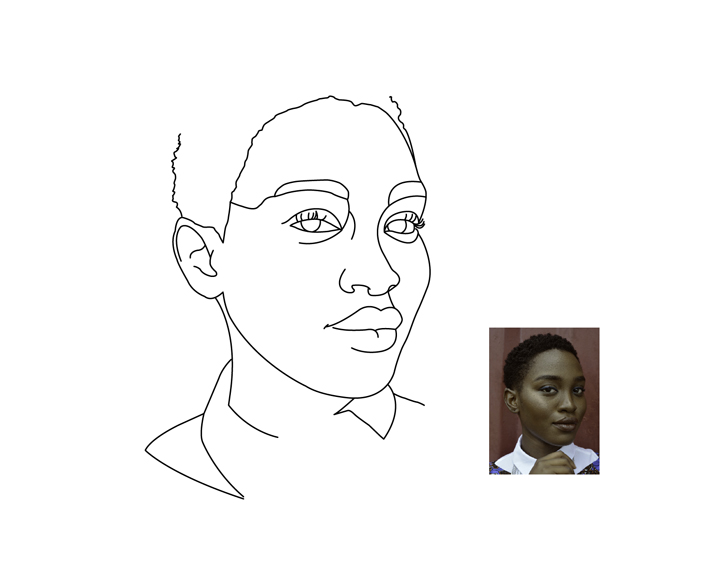
(Image credit: Proactive Creative)
Try out Minimalist Line Art
Minimalist line art is a distinctive type of art that’s very evocative yet simple.
It involves creating a drawing in one clean line without taking the pen off the paper.
So, simple line drawings are one of the easiest ways to get started with minimalist art.
But despite how simple it looks, creating line drawing art is not so straightforward. You’ll need to think through the design carefully before you draw it.
The line needs to flow smoothly and capture the essence of what you’re drawing. You don’t need to include all the details, though.
For example, if you’re drawing a face, you could just sketch the outline of the face. You might draw an eye or the nose, but you don’t need all the details.
If you don’t know which details to include, then here is a helpful exercise you can try. Set yourself a very short time limit and attempt to draw the face in that time. It could be one minute or even shorter. 30 seconds can also work well!
Then, you can distill the face (or whatever your subject is) down to the most essential elements.
You can create line art manually or digitally – both look amazing. Line art is perfect for displaying in minimalist homes.
Line art is often made using black lines on a white background. It’s very eye-catching and bold.
But if you prefer, you could experiment with other color combinations. A limited color palette can also look stylish.
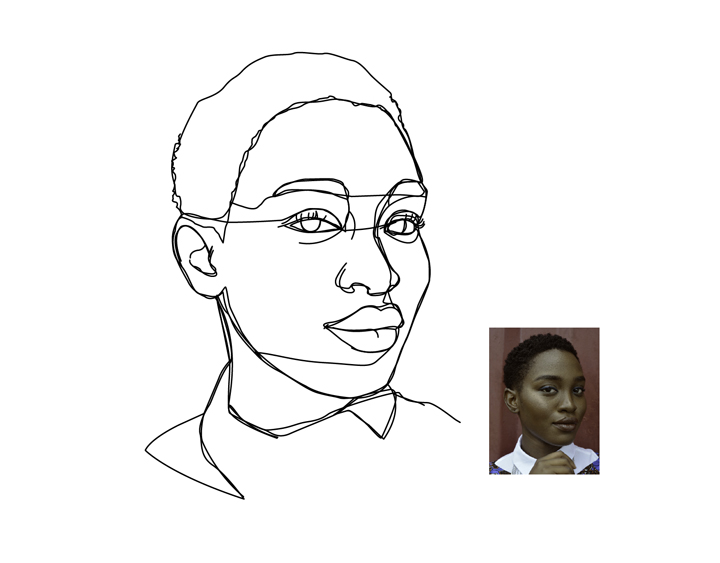
(Image credit: Proactive Creative)
Combining Manual & Digital Minimalist Artworks
There are two main ways to create minimalist art. You can either do it by hand with supplies like a pen or paint on a canvas.
Or, you can work digitally using software like Photoshop. But there is another option, which involves combining these two approaches.
For example, you could draw a minimalist line drawing by hand using a thick marker. You could use black on white paper or even a white pen on black paper.
Then, you can scan your artwork or take a photo of it and upload it. (You can find my reviews of the best scanners and the best cameras for artists here).
Once you’ve imported the image into your drawing program, you can make further edits to it.
That could mean changing the color or moving some of the lines and shapes around. For example, it’s an easy way to test out different color schemes.
You can also smooth out any lines or remove any little mistakes. So, it gives you greater control and precision than when working solely by hand.
The best format for saving your minimalist artwork is a PNG file, as it’s versatile and compatible.
And once you have the finished artwork, it’s easy to upload your minimal vector portrait to social media or your website.
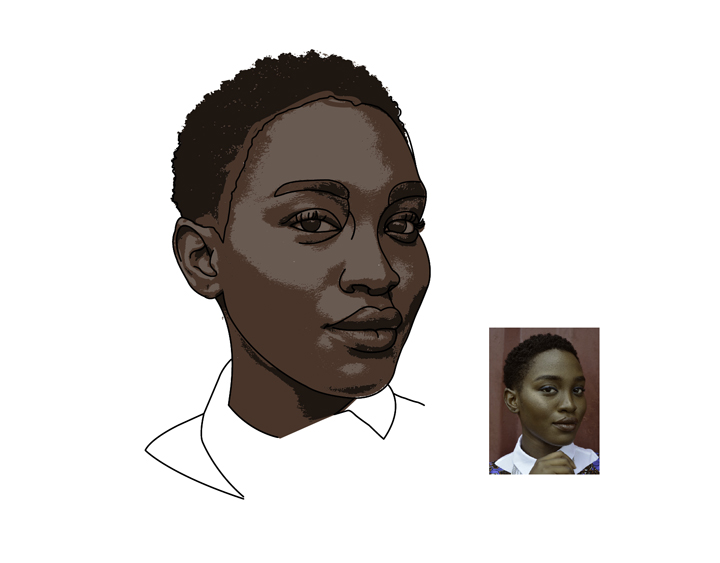
(Image credit: Proactive Creative)
Final Thoughts
Minimalist artwork is a very bold and striking kind of art. And there are so many different ways to create minimalist art.
So, you can keep these tips and principles in mind. But don’t feel like you have to follow in anyone else’s footsteps.
You can experiment and create your own unique minimalist artworks. That could be anything from minimalist vector art to portraits or 3D sculptures!
Let me know how you get on with your first attempts at minimalist art in the comments below.
And make sure to follow me on Pinterest for more tips, tutorials, and reviews for creatives!


